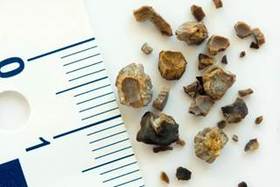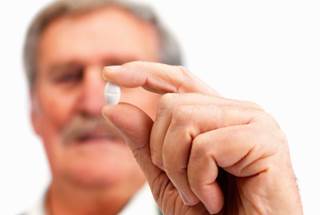 Shock wave lithotripsy (SWL) is an efficacious treatment for moderate-sized kidney stones, according to British researchers. In a study of 130 patients, Vera Y. Chung, MBBS, and Benjamin W. Turney, PhD, FRCS, of the University of Oxford, Headington, Oxford, U.K., evaluated the efficacy of SWL in treatment of kidney stones 10–20 mm in maximum diameter. The mean stone size was 12.8 mm. The overall treatment success (combined complete stone clearance and clinically insignificant residual fragments) was 66.4%. The success rate was 70.4% and 53.1% for stones less than 15 mm and 15 mm or larger, respectively, the investigators reported online in Urolithiasis. “This study suggests that SWL has an efficacy for treating larger renal stones (10–20 mm) that is equivalent to success rates for smaller stones in other series,” the authors wrote.
0 Comments
 Total and supplemental vitamin C intake is associated with a significantly elevated risk of kidney stones in men, according to a new study published online ahead of print in the American Journal of Kidney Diseases. In a prospective cohort analysis, Pietro Manuel Ferraro, MD, of Columbus-Gemelli University Hospital, Catholic University of the Sacred Heart in Rome, Italy, and colleagues found that total vitamin C intake of 90–249, 250–499, 500–999, and 1,000 mg/day or higher was associated with a 19%, 15%, 29%, and 43% increased risk of kidney stones among men compared with an intake below 90 mg/day (reference). The researchers found no association between total vitamin C intake among women. Additionally, Dr. Ferraro's group found that high supplemental vitamin C intake was associated with an increased risk of kidney stones in men, but not women. Supplemental vitamin C intake of 1,000 mg/day or more by men was associated with a significant 19% increased risk of kidney stones compared with no intake. Dietary vitamin C intake was not associated with kidney stone risk in either men or women. “We advise that male calcium oxalate stone formers abstain from supplemental but not dietary vitamin C intake,” the researchers concluded. Dr. Ferraro and his colleagues explained that vitamin C is partly converted to oxalate and excreted in urine, thereby potentially increasing the risk for calcium oxalate stone formation. They cited a study published in The Journal of Urology (2003;170:397-401) showing that 2 g/day of vitamin C increased urinary oxalate excretion by about 22%. The study included 156,735 women in the Nurses' Health Study I and II and 40,536 men in the Health Professionals Follow-up Study. The reason for the disparate findings between men and women is unclear, the researchers noted. “It is possible that the effect of vitamin C on kidney stone formation is different in men and women, and some data suggest the potential for sex differences in vitamin C metabolism,” they wrote. The researchers acknowledged that their study was limited by the possibility of unmeasured or residual confounding factors. “It is possible that the disparate results between dietary and supplemental vitamin C in men indicate unknown differences between supplement and nonsupplement users that affected our results,” the authors wrote. In addition, food-frequency questionnaires were used to ascertain nutrient intake and the investigators did not have stone composition reports or 24-hour urine data for most participants in the study cohorts. “Although the majority of kidney stones in these cohorts were likely the calcium oxalate type, we would not expect to see associations between vitamin C intake and other types of kidney stones.” |
Σχετικά
Με το ιστολόγιο αυτό επιχειρείται η κατά το δυνατόν άμεση ενημέρωση σε θέματα που αφορούν ουρολογικές εξελίξεις και δίνεται η δυνατότητα σχολιασμού των αναρτήσεων. Κατηγορίες
All
|
|
Ιατρείο Λαγκαδά: Δ. Μήλιου 24 (έναντι 1ου δημοτικού), Λαγκαδάς
Τ: 2394 020 780, Κ: 693 63 23 794 |
Όροι Χρήσης | Επικοινωνία | Copyright © 2013
 RSS Feed
RSS Feed